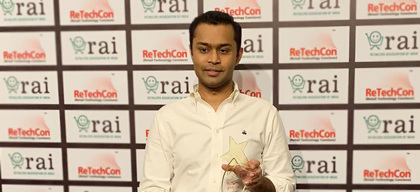From a manager to a friend, philosopher, guide

Entrepreneurship
169 week ago — 6 min read
The COVID-19 pandemic came as a rude shock to everyone across the globe. Many of us first ignored the warning signs until the government suddenly announced a lockdown in whole country. The abrupt lockdown destroyed all original plans with regards to operations and delivery. Overnight team members returned to their hometowns (native place) to be with the family in these strange and testing times. Most of them didn’t even think once about how they would work from remote areas before going back. The team members who were staying in villages that were far away from cities had to face a lot of electricity and internet issues. Although internet is cheap in India, even today there are villages that don’t have a proper internet network all the time. The same is true with electric supply.
Challenges galore
In the initial days of the pandemic, we all went into reconfiguration mode of learning to work together from a distance of thousands of kilometres. Fortunately, this wasn’t the first time that I was working from a remote location—I used to manage my development team in India while staying in the US. Together, we developed and delivered various big IT projects. However, this time it was completely different from the typical offshore working style. In those days, the whole team used to convene in office at a particular time to work on some of the best projects we delivered. I only had to adjust my schedule with teams working from different time zones.
This time, remote working involved all team members working from their own locations—most of them from remote villages. Every team member had his/her own challenges like erratic electricity supply, poor network, family problems and issues with laptops. Even though people managed to get electricity or internet connectivity, what could they do if the laptop stopped working! In remote villages, getting things back in working condition is difficult even during normal times, forget about getting them up and running in a lockdown. Finding spare laptops was like winning a lottery.
For my team members, I had to become various things, from HR person to finance manager. I had be motivated and positive, irrespective of what was going around, to make sure the team morale remained high.
And if everything was available and working, the members were down with the virus. All these challenges resulted in an increase in stress levels of members which impacted their overall concentration, operation and delivery of IT projects.
Lessons learnt
The challenging times taught me a lot. The biggest lesson was in the area of people management.
Lesson 1
Being there for the team: All the operational issues the team faced added extra layers of work for CXOs like me and demanded that we planned our actions only after first thinking of our team members’ health and their challenges. Of course, this was done before as well, but due to the crisis the issues and their complexity increased multi-fold which required going beyond the role of a manager. One has to play the role of a big brother and try to solve the problems of the team members within the team itself rather than seek the help of other departments who had their own issues to deal with.
For my team members, I had to become various things, from HR person to finance manager. Above all, I had to become their friend, philosopher and guide as the situation demanded. I had be motivated and positive, irrespective of what was going around to make sure the team morale remained high.
I learnt that sometimes it more important leaders to become a friend to their team members rather than just a manager. And unless we listen to them as a friend we will not be able to understand their problems and work around the issues to get best out of the team.
Lesson 2
New ways of identifying non-performers: Team leaders have a lot riding on their shoulders and need to keep up the efficiency of their teams. From time to time we need to take tough calls, which is never easy when one is close with team members. Identifying non-performers was more difficult during this period than in normal days as everyone had their unique challenges and limitations, most of which were genuine. However, there are always some members who try to take advantage of the situation. The pandemic has taught me new ways of identifying the black sheep and differentiating performers from non-performers.
Lesson 3
More humane decision making. When you are not talking face to face, at times it becomes difficult to understand the problem at itself. Finding solutions takes more time than usual. The lockdown had already impacted everyone’s minds and in this tough times getting best out of the team required becoming more than a professional leader. This pandemic added more emotions to my decision making and made me a more humane leader.
Also read: Relearning retail
Image source: shutterstock.com
Article published in STOrai Magazine. The author Pooraan Jaiswal has close to 22 years of professional experience and has worked with companies like TBZ, Globus, Rediff.com and NIIT Technologies in the past. He had launched a Mobile EdTech Platform/product, long before Byju’s and sold it to a top American online course provider. He is holds a PhD degree from Marymount University, Virginia, USA.
Disclaimer: The views and opinions expressed in this article are those of the author and do not necessarily reflect the views, official policy or position of GlobalLinker.
View STOrai 's profile
SME Inspirations
Other articles written by STOrai Magazine
Enhanced Brand Storytelling in the Digital Age
23 week ago
Most read this week
Trending

















Comments
Please login or Register to join the discussion